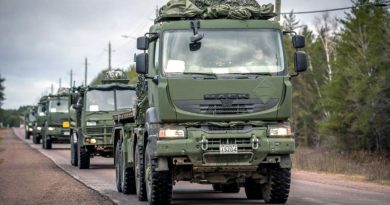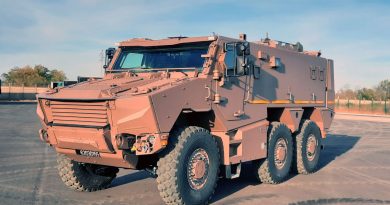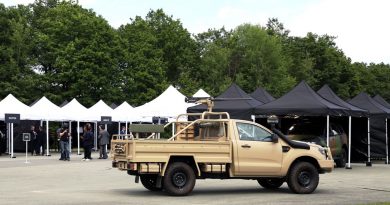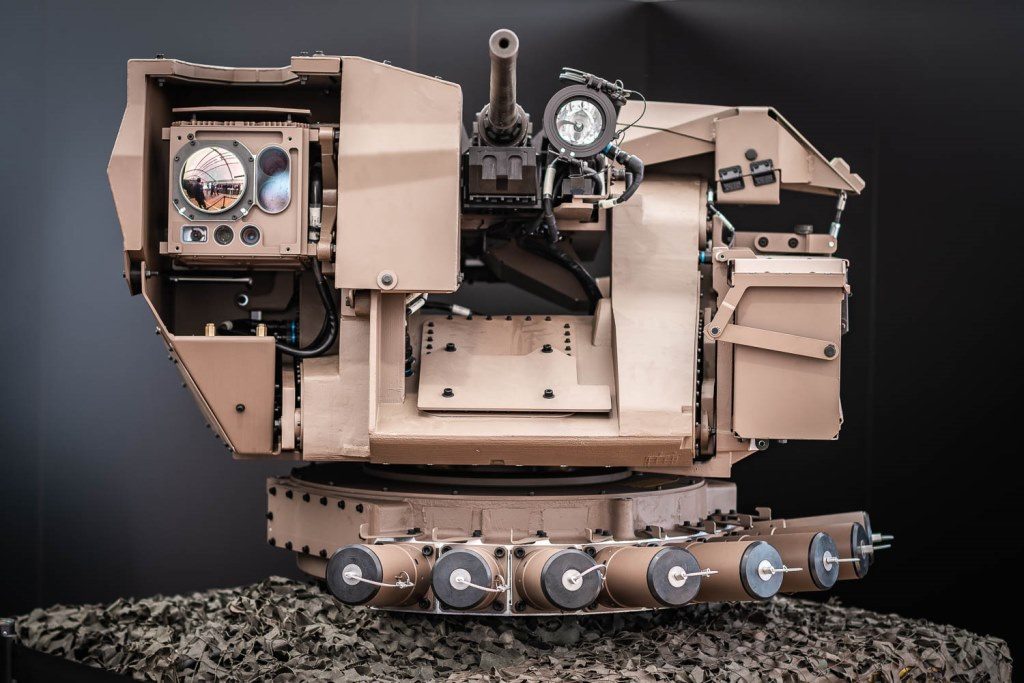
Arquus inaugurates its Hornet Business Unit dedicated to RCWS
Entering the Arquus stand at IDEX 2021 the visitor can see a section of it where the group name is replaced by the Hornet logo; the Abu Dhabi exhibition witnessing the launch of the new business unit devoted to the design, development and production of remotely controlled weapon station (RCWS).
“Looking at our competitors, most of the key players in the RCWS field come from adjacent fields, system engineering, small arms, while in our case we come from the armoured vehicles world, which allows us to perfectly know all the constraints that mark the integration of such systems onto a platform. That said, we came to a point where we decided that to improve our market penetration, improving success probabilities for our RCWS, we needed to split them from our armoured vehicles, hence the decision to establish a dedicated business unit with its own brand,” Jean Boy, the head of the newly formed entity explains to EDR On-Line.
Arquus led to the award of the development of the RCWS for the French Army Scorpion programme.
The French company involvement in the remote weapon stations domain started with the early 2010 when then Panhard developed the Wasp light RCWS in cooperation with Safran, the know-how inherited by Arquus having led to the award of the development of the RCWS for the French Army Scorpion programme.
Known as T1, T2 and T3 in the Scorpion world, on the export market these are dubbed Hornet, Hornet Lite and Hornet S. Among the three the one which includes more elements of novelty is probably the Hornet, which can be armed with three of the most widely used categories of weapons, a 12.7 mm or 7.62 mm machine gun, and a 40 mm automatic grenade launcher, respectively with 300, 1,200 and 64 ready to use rounds. Being under contract for the French Army, the interfaces currently available are those for the M2, the MAG 58 and the H&K AGL weapons, albeit the Hornet BU is ready to develop interfaces for other similar weapon systems according to customer’s needs.
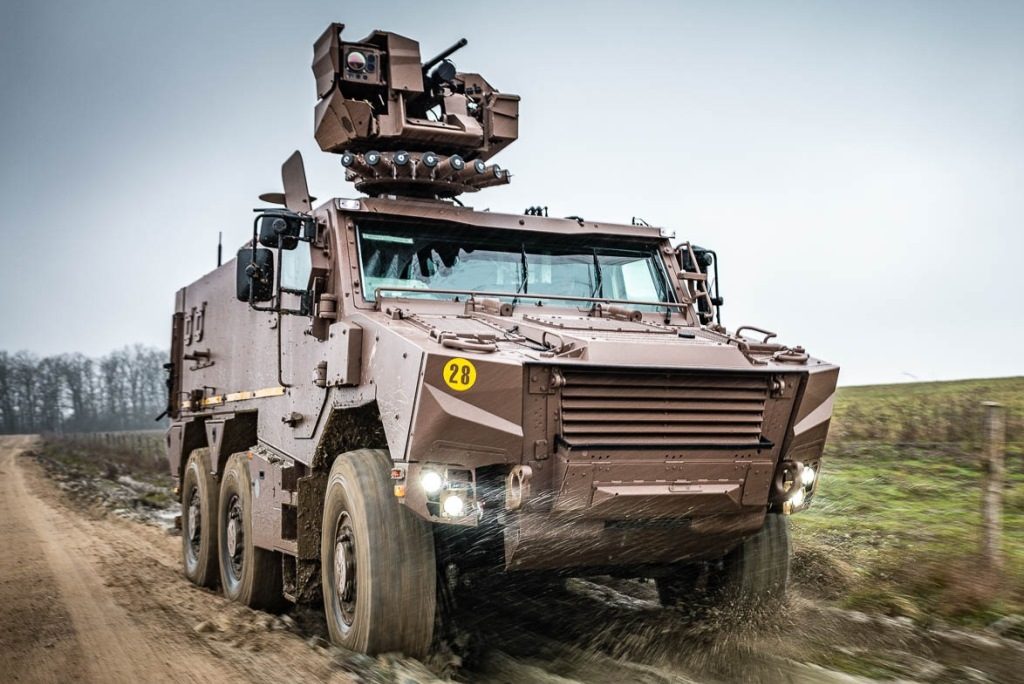
“One of the original features of our 2+2-axis stabilised Hornet RCWS is the smoke grenade launcher system, which is independent from the RCWS itself; when linked i.e. to a laser warning receiver it allows firing multispectral smoke grenades in the direction of the incoming missile so that the vehicle can manoeuvre behind the curtain evading the threat, a considerable soft-kill asset against such threats,” Jean Boy explains, adding that depending on the situation grenades can be fired in two salvos, to increase the duration of the smoke screen, or be used for sustaining two engagements. The Hornet in its basic configuration, without weapon, ammunition and protection kit, weighs 145 kg, the grenade launcher system increasing it to 250 kg, height being also greater, stepping from 702 mm to 876 mm. The angular speed of the RCWS is of 90°/s, “but that of the grenade launcher is much higher in order to reduce as much as possible the reaction time,” boy explains.
The optronic package adopted for the Scorpion programme is provided by Safran and includes a full HD day channel, an uncooled thermal channel with VGA quality, and a long-range laser rangefinder. “To ensure a good situational awareness we have in fact three day cameras, one with a 42° Field of View that helps the operator to see a good portion of the battlefield on its 13.3-inch full HD screen, and two more with continuous zooms providing narrow and very narrow FoV, used for aiming,” the Hornet BU director adds. According to available information the detection, recognition, identification ranges at day are respectively of over 9.8, 5.6 and 3.4 km, while at night these are of over 6.5, 2.8 and 1.6 km. The Hornet features a tracking-assistance system; “If the operator keeps the crosshair on the target for three seconds, then the system will continue to follow it autonomously,” Jean Boy says underlining that for the time being the Hornet can do this when stationary, against moving targets, or when on the move, against fixed targets. These performances can however be cancelled should dust or mud cover the sensors. “Leveraging the lessons learned by the French Army with the RCWS currently in use, we decided to equip our Hornet with a cleaning system based on water and air, which ensures maximum reliability in re-establishing a perfect view for the operator,” Jean Boy tells us, adding that “the turret has been designed so that when there is no need to view the battlefield the optronic head can be stowed looking down, the side plate part of the optional Level 2 armour kit also ensuring ballistic protection,” which is also extended to servos.
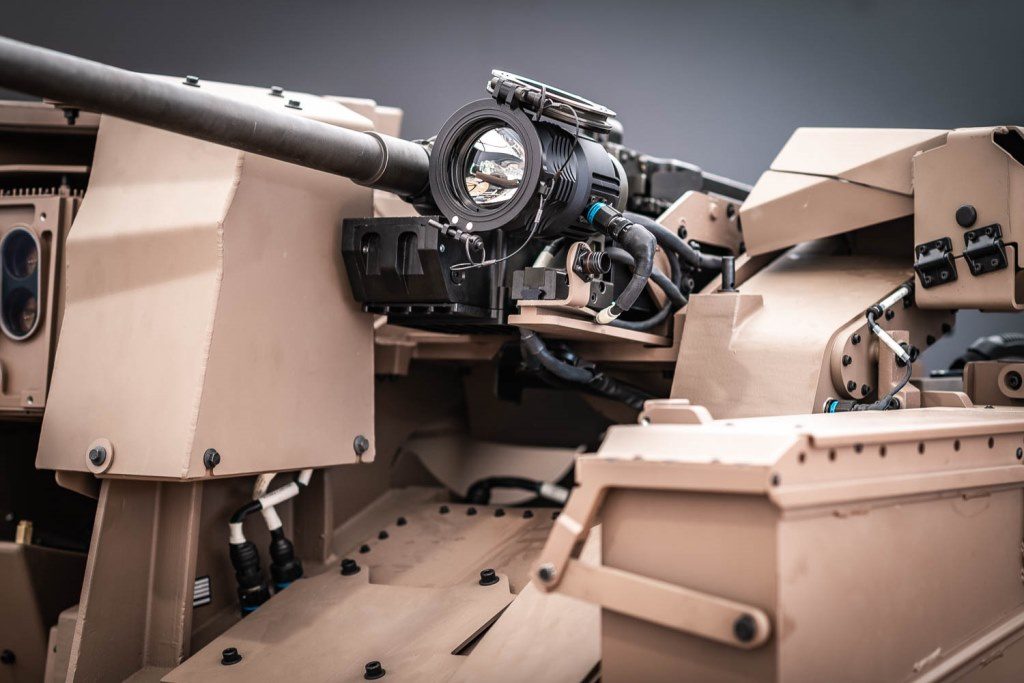
The decoupling in elevation of the optronic suite, located on the right side of the weapon, from the armament, the Hornet elevation arc is –20°/+60°, also allows to maintain the optronics in function while putting the weapon at maximum elevation when a non-threatening posture is required.
When installed on the Griffon or on the Serval, the two first vehicles of the Scorpion programme to enter service with the Armée de Terre, the Hornet will be integrated in the SIC-S battle management system allowing cooperative engagement, i.e. one Hornet shooting on a target acquired by another one. The turret is however BMS agnostic and fully compatible with the NATO Generic Vehicle Architecture, its control console being capable to integrate the tactical situation as well as Blue Force/Red Force tracking.
Designed to be armed with a 7.62 mm machine gun, the Hornet Lite has the same elevation arc and angular speed of the Hornet, and weighs only 141 kg without weapon, ammunition and protection. With a 400 rounds capacity, it maintains the same optronic suite of the top product as it was considered that longer D/R/I ranges would have been anyway useful both for reconnaissance and intelligence gathering, as well as in cooperative combat. As for the Hornet S, this was specifically designed to be installed around Safran Electronics & Defense Paseo commander’s sight, which provides the observation and aiming capacity. Also a 2-axis stabilised system, to be fitted with a 7.72 mm MG, it can host a 550 rounds ammunition box.
Photos courtesy Arquus

